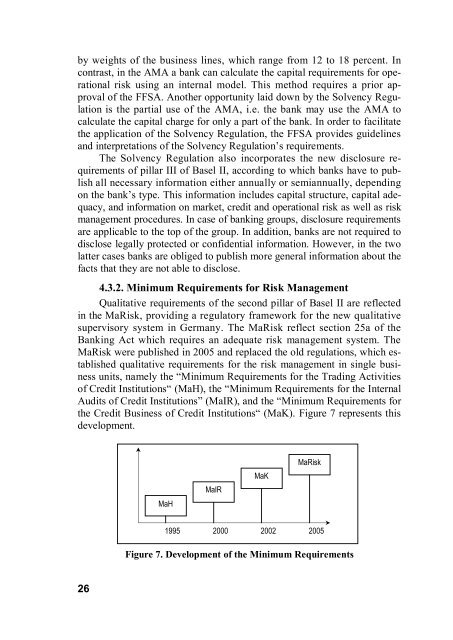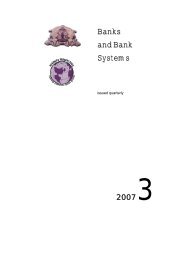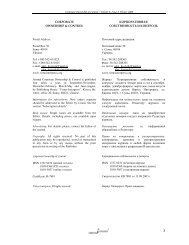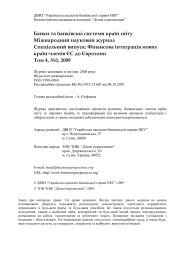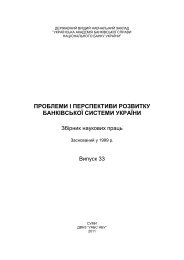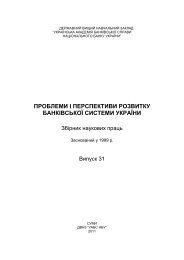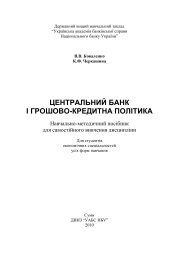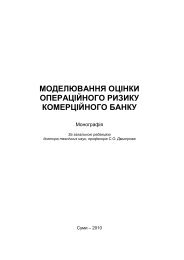BASEL II: PROBLEMS AND USAGE
BASEL II: PROBLEMS AND USAGE
BASEL II: PROBLEMS AND USAGE
Create successful ePaper yourself
Turn your PDF publications into a flip-book with our unique Google optimized e-Paper software.
y weights of the business lines, which range from 12 to 18 percent. In<br />
contrast, in the AMA a bank can calculate the capital requirements for operational<br />
risk using an internal model. This method requires a prior approval<br />
of the FFSA. Another opportunity laid down by the Solvency Regulation<br />
is the partial use of the AMA, i.e. the bank may use the AMA to<br />
calculate the capital charge for only a part of the bank. In order to facilitate<br />
the application of the Solvency Regulation, the FFSA provides guidelines<br />
and interpretations of the Solvency Regulation’s requirements.<br />
The Solvency Regulation also incorporates the new disclosure requirements<br />
of pillar <strong>II</strong>I of Basel <strong>II</strong>, according to which banks have to publish<br />
all necessary information either annually or semiannually, depending<br />
on the bank’s type. This information includes capital structure, capital adequacy,<br />
and information on market, credit and operational risk as well as risk<br />
management procedures. In case of banking groups, disclosure requirements<br />
are applicable to the top of the group. In addition, banks are not required to<br />
disclose legally protected or confidential information. However, in the two<br />
latter cases banks are obliged to publish more general information about the<br />
facts that they are not able to disclose.<br />
4.3.2. Minimum Requirements for Risk Management<br />
Qualitative requirements of the second pillar of Basel <strong>II</strong> are reflected<br />
in the MaRisk, providing a regulatory framework for the new qualitative<br />
supervisory system in Germany. The MaRisk reflect section 25a of the<br />
Banking Act which requires an adequate risk management system. The<br />
MaRisk were published in 2005 and replaced the old regulations, which established<br />
qualitative requirements for the risk management in single business<br />
units, namely the “Minimum Requirements for the Trading Activities<br />
of Credit Institutions“ (MaH), the “Minimum Requirements for the Internal<br />
Audits of Credit Institutions” (MaIR), and the “Minimum Requirements for<br />
the Credit Business of Credit Institutions“ (MaK). Figure 7 represents this<br />
development.<br />
MaH<br />
MaIR<br />
MaK<br />
MaRisk<br />
1995<br />
2000<br />
2002 2005<br />
Figure 7. Development of the Minimum Requirements<br />
26


